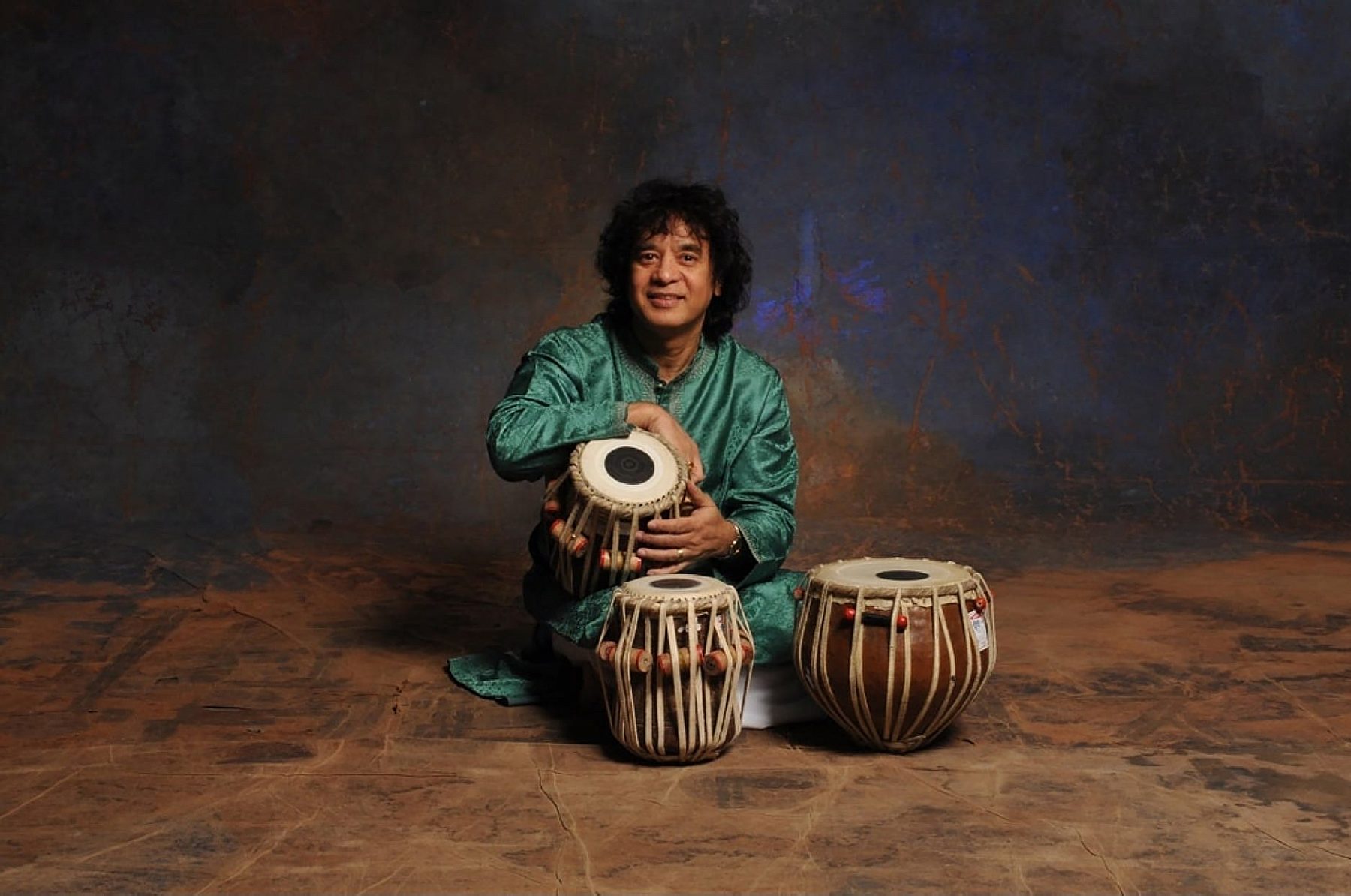The Master of Tabla: Zakir Hussain
Zakir Hussain performing in the Song Around The World, “King Clave"

The pre-eminent classical tabla virtuoso of our time, Zakir Hussain, is appreciated both in the field of percussion and in the music world at large as an international phenomenon and one of the world’s most esteemed and influential musicians. The foremost disciple of his father, the legendary Ustad Allarakha, Zakir was a child prodigy who began his professional career at the age of twelve, accompanying India’s greatest classical musicians and dancers and touring internationally with great success by the age of eighteen.
The tabla is the percussion instrument most commonly used in north Indian classical music. The instrument consists of two drums, called bayan (left) and dayan (right) as per the hand they are most commonly played with. The drums consist of a layer of goatskin stretched over a metal or clay vessel.
Zakir Hussain is considered an architect of the contemporary world music movement, collaborating with artists such as Mickey Hart, Belá Fleck, Charles Lloyd, Eric Harland, and many more contemporary artists.
As a composer and educator, Zakir has scored for numerous films, major events and productions around India, Europe and the United States. He has also conducted many workshops at Princeton University and Stanford University and received two honorary doctorates from Berklee College of Music and Indira Kala Sangit.

Zakir Hussain named Percussionist of the Year by the 68th DownBeat Critics Poll
What is Hindustani (North Indian) Classical Music?
Hindustani Classical Music, also known as North Indian Classical Music (NICM) is an Indian musical tradition born of the Vedic scriptures from over 6,000 years ago, these scriptures then developed into chants and musical notes, rhythms and variations.
This genre is usually associated with nature and the natural phenomena of seasons, which creates “ragas” or musical moods, and “taals” or cycles. The complexity of this genre is why most of the performances are improvised within the structure of notes and mathematics, creating a spontaneous melody and providing us with a unique moment in every performance.
Why does Indian music sound so different from western music?
A raga or raag (: rāga; also raaga or ragam; literally "coloring, tingeing, dyeing"]) is a melodic framework for improvisation akin to a melodic mode in Indian classical music. The rāga is a unique and central feature of the classical Indian music tradition, and as a result has no direct translation to concepts in classical European music.[4][5] Each rāga is an array of melodic structures with musical motifs, considered in the Indian tradition to have the ability to "colour the mind" and affect the emotions of the audience.
Don’t miss the master of tabla, Zakir Hussain December 15th, 2021 at Peace Through Music: A Global Event For The Environment.
Follow Zakir Hussain on social media for more updates!
Website: http://www.zakirhussain.com/
Facebook: https://www.facebook.com/Zakir...
Twitter: https://twitter.com/ZakirHtabla
Instagram: https://www.instagram.com/zakir_hussain_ji/
Spotify: https://open.spotify.com/artist/6DDCjHWtL6jTl1B5wG8tF6?si=6pRkxTdjRRyWOfg8ZhKLag
Apple Music: https://music.apple.com/us/artist/zakir-hussain/1526097

Don’t forget to check out our social media! Follow us for more news on our exclusive content like videos, music downloads, pre-releases and more.
Facebook: https://www.facebook.com/PlayingForChange/
Instagram: https://www.instagram.com/playing4change/
Twitter: https://twitter.com/playing4change
Tik Tok: https://www.tiktok.com/@playing4change?_t=8XHNmPDZwX8&_r=1





